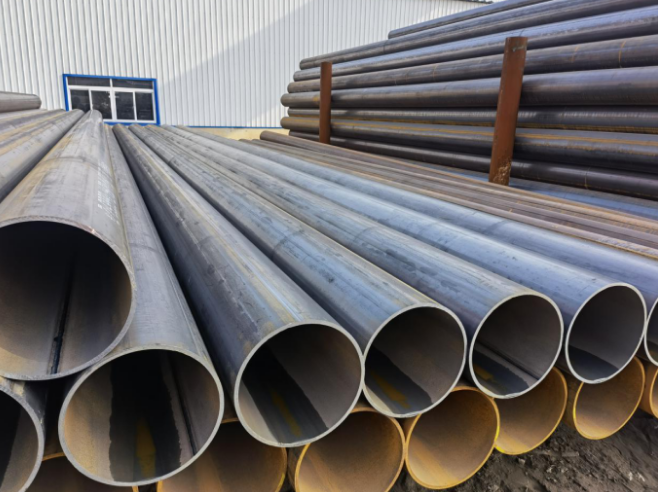
Factors Affecting Welding Thermal Cycle
Date:2021-03-11 keywords:welding thermal cycle
Welding thermal cycle refers to the process in which the temperature of a certain point on the edge of the tube changes over time under the action of the heat source generated by the high-frequency welding current. The welding thermal cycle reflects the thermal effect of the welding heat source on the weld and nearby metals, resulting in structure and performance At the same time, it also provides a way to find a good welding process, improve the weld structure and predict the weld stress through technological means.

Factors affecting welding thermal cycle:
1. Welding process and heat input
Under the premise that other conditions are stable and the input welding heat (power) remains unchanged, the welding speed is fast, the heating time is short, the heating width is narrow, and the cooling is fast; the opposite is true when the welding speed is slow.The heat input can comprehensively reflect the influence of welding current, welding voltage, welding speed, extrusion force, welded pipe variety, operation quality, etc. on the weld. When the heat input increases, the heat-affected zone becomes wider and the heating time becomes longer. The oxidized zone at the edge of the billet becomes wider and the cooling intensity increases, which is detrimental to the quality of the weld. Similarly, when the welding heat input decreases, the heating range and heat-affected zone become narrower, and the heating time is shortened, which also affects the quality of the weld.
2. Welded pipe specifications
An important feature of high-frequency welding current is the skin effect, which takes the tube blank as the loop. When the tube to be welded is large and thick, the longer loop and the longer heat transfer path will consume energy, resulting in the tube The rest of the body heats up, which leads to an increase in linear energy and affects the thermal cycle.
3. Induction coil and magnetic rod
The induction coil and the welded pipe are tightly coupled, that is, the gap between the induction coil and the welded pipe is small, the number of turns is matched, the skin effect and proximity effect induced by the edge of the tube blank are strong, and the edge of the tube blank receives more high-frequency current, thereby increasing the heat input The function of the magnetic rod is to concentrate as much induced current as possible on the two edges of the blank to be welded, thereby increasing the efficiency of the welding energy. In this way, only the seemingly low but effective input energy is required to complete the welding. On the contrary, if The induction coil is large, the magnetic rod is small, and the permeability is low. More welding current will be lost in the tube body, and less current will be concentrated to the edge to be welded. Although the energy of the characterizing line is large, the actual energy used for welding is not much, which affects the thermal cycle of the tube body.
4. The quality of the formed tube blank
High-quality formed tube blanks can ensure parallel butt joints of the edges to be welded, thereby achieving high-quality welding with lower heat input. If the edges to be welded are V-shaped butt joints, the shape of the inner and outer opening angles will increase and decrease the welding heat , The thermal cycle curve of the welded pipe will also change accordingly.
5. Opening angle
The opening angle is large, the proximity effect of the high-frequency current is weak, the time for the tube blank to reach the welding temperature will be longer, the heating zone will become wider, and the heat input will increase; on the contrary, the opening angle is small, the current proximity effect is strong, and the welding edge heating zone is narrow, so The heat input required is small, which changes the thermal cycle of the welded pipe. In addition, the welding extrusion force and the chemical composition of the tube blank will affect the actual effect of the heat input and the welding thermal cycle.
Tips: According to the weld shape, welded pipe can be divided into straight seam welded pipe and spiral welded pipe (SSAW). Straight seam steel pipe is a steel pipe whose weld seam is parallel to the longitudinal direction of the steel pipe. Straight seam steel pipes can be divided into high-frequency straight seam steel pipes (ERW Pipe) and submerged arc welded straight seam steel pipes (LSAW) according to the production process. Straight seam welded pipe has simple production process, high production efficiency, low cost and rapid development.
News Update :
Schedule 40 vs. Schedule 80 Pipe Pressure Rating...
©2017 Permanent Steel Manufacturing Co.,Ltd https://www.permanentsteel.com All Rights Reserved.
Terms of Sale|Privacy Policy


